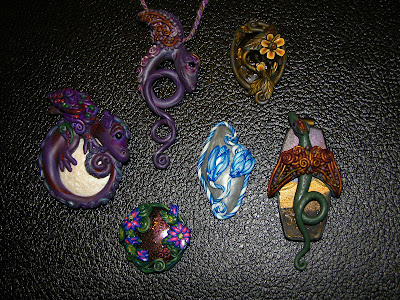Ah, Kato Clay... Wonderful stuff once you get it moving, but the aggravation to get it there. Or so I once thought. I have found that it listens to force quite well and that once you have it conditioned, you do not have to resort to extreme measures for a year or more.
What I do is a modification of the technique that Jana Roberts Benzon uses. While she prefers to work with whole blocks of clay that are still in the wrapper, I many times only want to work with a relatively small amount of clay. I also will buy my clay in the big bricks, so conditioning that much clay is rather time consuming.
My process is this:
*Slice off a section of clay the size you want to work with. You don't have to get it all in one chunk. Don't worry about it crumbling, we'll take care of that soon.
*Assemble the slices, chunks or crumbles into a pile on a hard, smooth work surface. My worktable is wood on which I have set a glass table top.
*Take a wide smooth faced hammer like the wide face on a ball pean hammer or a chasing hammer and start hitting the clay.
*Because the face is smooth, almost none of the clay will stick to it and the little bit that does is easy to scrape off with a clay blade.
*Keep hammering until most of the clay pile starts squishing instead of cracking. You don't have to hit it really hard, but you do want to try to make a dent in the clay. The edges of your pile will still probably be crumbly if you have not struck those as much. Since I work on glass, that is what I tend to do.
*Cut the pile and rearrange it so that the edge pieces are now toward the middle so you can hammer them too.
*Keep hammering, rearranging and hammering the clay until it is soft and pliable.
*Now you can either use your brayer to flatten it out to a thickness that will go through your pasta machine, or you can use the hammering process and let the clay spread out and thin.
*Run the well hammered clay through your pasta machine at the thickest or next to thickest setting, and continue conditioning it as you would a more compliant clay. You should not have to do too much at this point.
*If you find it is still crumbling, just assemble the crumbles and start hammering again.
Using this technique I have been able to "tame" Kato clay into doing my bidding every time.








